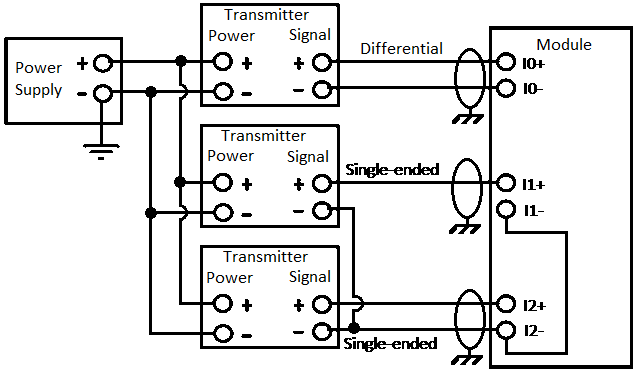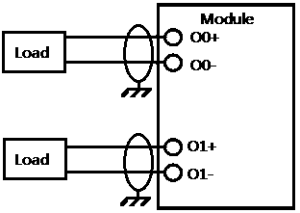Analog modules receive signals with two values or more of information. Two standards very used are those which keep the values into the range of 4 to 20 mA or 0 to 10 VDC, but there are others. For example, a signal into the range of 0 to 10 volt can have middle values as 5.3 or 4.56 volt. Analog signals usually come of transmitters. Also, there are temperature modules among the analog modules; they can use thermocouple or RTD.
Input Analog Modules
Input analog modules, usually, have several channels. Each channel can measure current, voltage or both, also they can be connected in single-ended and differential modes. Differential inputs are more immune to the noise that the single ended inputs. For the connection, it must use shielded, twisted-pair wire (as belden 8761). Input modules can be connected in several ways, depending if the signal is voltage or current or if the power supply is in the loop or not. The next figure shows a 4-wires connection in the transmitter, also shows the differential and single-ended connections, it can see that the single-ended connection have one point in common.
Output Analog Modules
Output analog modules, usually, have several channels. The channel output can be of voltage or current, in some modules it can chose between voltage and current. The next figure shows a typical connection for output analog modules.
.


